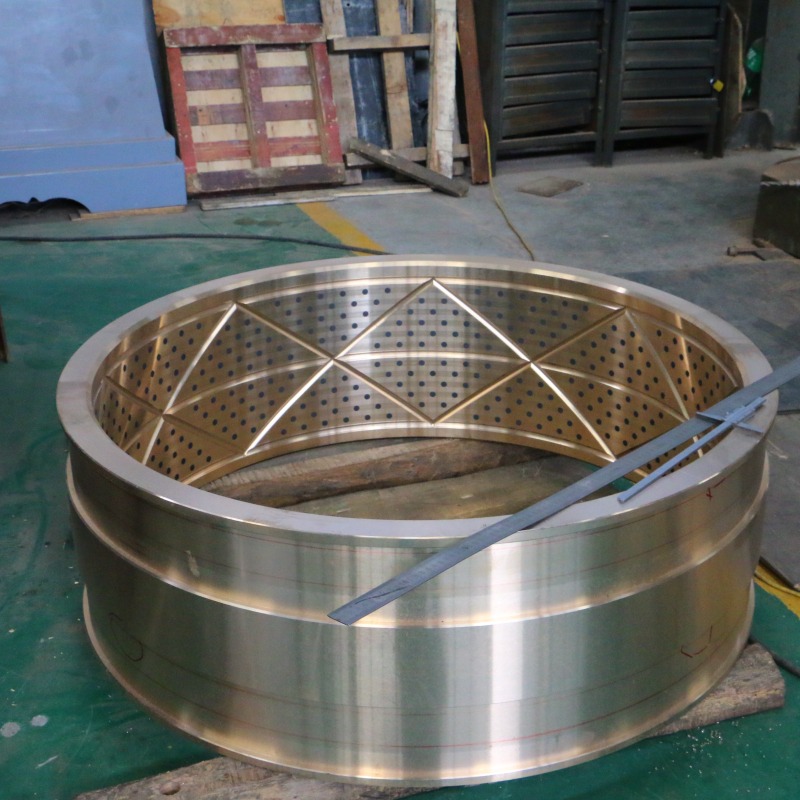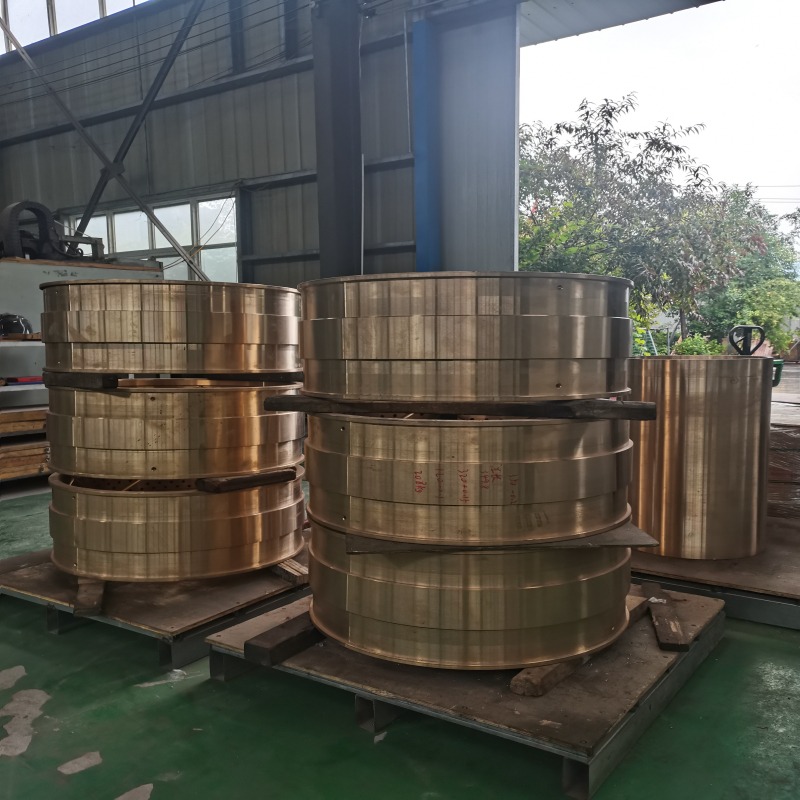
Home > News > Industry news > Graphite copper bushing cracked during lathe machining, what is the reason?
Problems with the material itself
Internal defects: Graphite copper bushings may have internal defects during the manufacturing process. For example, during casting or powder metallurgy production, if the raw materials are not evenly mixed, this may lead to localized structural weaknesses. If the distribution of copper and graphite is uneven, areas containing too much or too little graphite are subject to cutting forces during turning, which can easily lead to stress concentration and thus cracking.
Material impurity: If impurities are mixed in the copper bushing material, it will affect the overall performance of the material. Impurities may reduce the toughness and strength of the material, making the copper bushing more susceptible to cracking during the turning process. For example, mixed with high hardness metal particles or non-metallic inclusions, under the action of cutting force, these impurities around the easy formation of stress concentration points, triggering cracking.

Cutting parameters are unreasonable
Cutting speed is too fast: if the cutting speed of the lathe is set too high, the cutting temperature will rise sharply. For graphite copper bushings, too high a temperature may cause the copper alloy matrix to expand, while the expansion coefficient of graphite is different from that of copper, and this difference will generate thermal stresses within the material. At the same time, high temperatures may also change the microstructure of the material and reduce its strength, thus making the copper bushing prone to cracking.
Excessive feed: A larger feed will produce a larger cutting force. When the cutting force exceeds the tolerance limit of the graphite copper bushing material, cracks will be produced on the surface or inside the copper sleeve. Especially in the turning process, the tool on the copper bushing material extrusion effect is obvious, too large a feed will make this extrusion more serious, resulting in plastic deformation of the material, and ultimately cracking.
Cutting depth is too large: too deep cutting depth will make the cutting edge cut into the material too deep, resulting in a large radial cutting force. This force will cause the copper bushing to deform greatly in the radial direction, which will easily lead to uneven stress distribution within the bushing and trigger cracking.

Tooling problems
Severe tool wear: If the turning tool is badly worn, its cutting edge will become unsharp. When turning graphite copper bushings, the blunt tool will generate a large amount of squeezing force and friction on the material. This extra force can cause the stress state on the surface of the copper bushing to change, increasing the risk of material cracking. For example, a worn tool may produce tearing of the material when cutting instead of cutting smoothly, resulting in cracking of the copper bushing.
Inappropriate tool geometry: The geometry of the tool has a significant impact on the stress distribution during cutting. If the tool’s front angle, back angle and other parameters are not properly selected, it will lead to an unreasonable distribution of cutting force. For example, too small a front angle will increase the cutting force, and too large a rear angle may weaken the support of the tool on the copper bushing, and these situations may lead to cracks in the copper bushing in the turning process.
Clamping problems
Clamping too tight: If the clamping force on the graphite copper bushing on the lathe is too large, it will generate excessive local stress in the clamping part of the bushing. In the turning process, this local stress and cutting stress superposition, it is easy to exceed the yield strength of the material, so that the copper bushing in the vicinity of the clamping site cracks.
Improper clamping: for example, the use of unreasonable clamping, not to ensure that the axis of the copper bushing and the lathe spindle axis coincide, in turning will produce centrifugal force and additional bending stress. This uneven distribution of stress will lead to easy cracking of the copper bushing in the machining process.
+86 17719955658
AddMazhuang Village, Yuhe Town, Huixian City, Xinxiang City, Henan Province, China
E-maildora@hsjxchina.com
Copyright @ 2025 Haishan Bronze Casting No:84463
Copyright @ 2025 Haishan Bronze Casting
Copyright @ 2025 Haishan Bronze Casting